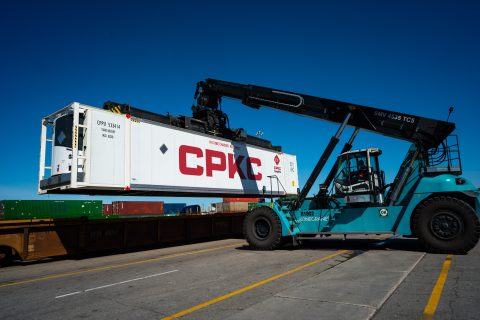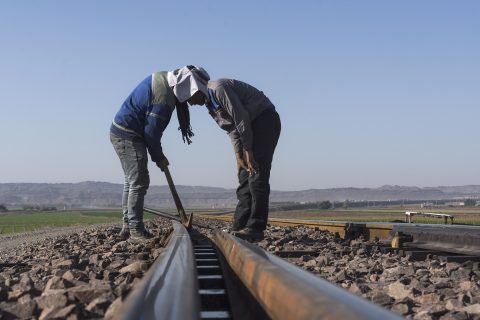Azerbaijan-Iran bridge interests and infrastructure to the benefit of INSTC

Geopolitical instability in the Caucasus area does not seem to hinder the development of relations between Iran and Azerbaijan. In contrast, it appears to be strengthening them. The two countries have also found themselves in conflict; however, they currently focus on synergy and want to grasp the opportunity of the changed geopolitical status quo in their neighbourhood and use it for economic and trade development. New railway lines, cargo terminals and a revived International North-South transport corridor are on the agenda.
The annexation of Nagorno-Karabakh, no matter how traumatic it can be for Armenian populations, seems to bring stability to the relations of Azerbaijan and Iran, who are now pledging to develop transport infrastructure and shared corridors jointly within the INSTC context.
Iran’s Roads and Urban Development Minister Mehrdad Bazrpash met with Azerbaijan’s Deputy Prime Minster Shahin Mustafayev at the end of last week, and they already brought forward some investments that could shift the transport outlook of Caucasus and the INSTC, including Russia and India.
New railway bridge
The bilateral meeting produced some transport-worthy news. Specifically, the two countries disclosed plans to build road and rail infrastructure linking Azerbaijan to its Nakhchivan exclave via Iran. The project will include the construction of a road bridge that is expected to be operational in two months. Most importantly, it will include the construction of a rail bridge which will link Nakhchivan with Iranian railway infrastructure.
From there, a new line will be built to connect Nakchivan with the Azerbaijani mainland comprehensively. This project will become a route alternative for what is known as the Zangezur Corridor, crossing through Azerbaijan’s mainland, Armenia, and Nakhchivan and which is currently unfeasible to develop given the geopolitical strife between Armenia and Azerbaijan.
The Astara terminal
Additionally, the two parties discussed building a cargo terminal in Astara, the linking point of Iran and Azerbaijan along the Caspian Sea shores. The terminal is expected to facilitate five million tons of cargo annually and become a hub for cross-border traffic within the INSTC. During their discussion, Bazrpash and Mustafayev underlined that they will do their best to complete the terminal’s construction as soon as possible.
No rail to Astara
Nevertheless, constructing the Astara terminal without a functional rail line extending from the border to Iran is questionable. Iran and Russia agreed last May that the construction of the Rasht-Astara railway line, a critical missing link for the INSTC, will be partially funded by Russia. Whether Russia will also contribute on a technical and implementational level by providing materials, personnel, and know-how is unclear. A substantial step has been taken in closing infrastructure gaps, however, with no clear timeframe.
There is a chance that the terminal’s development, if it starts before the construction of the Rasht-Astara link, could also streamline the railway line’s development and vice versa. Whatever comes first will complement the other, that is for sure. The question is how far invested are the partners in the region to make this happen and whether they will persist through their political and geopolitical differences.
Also read:




